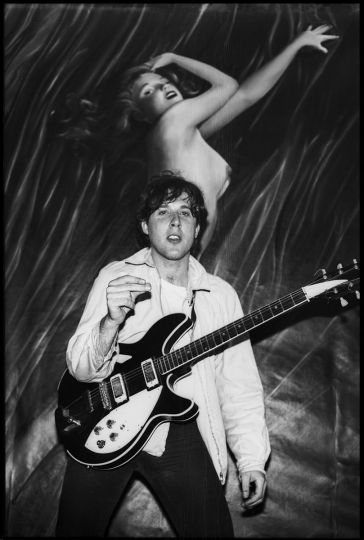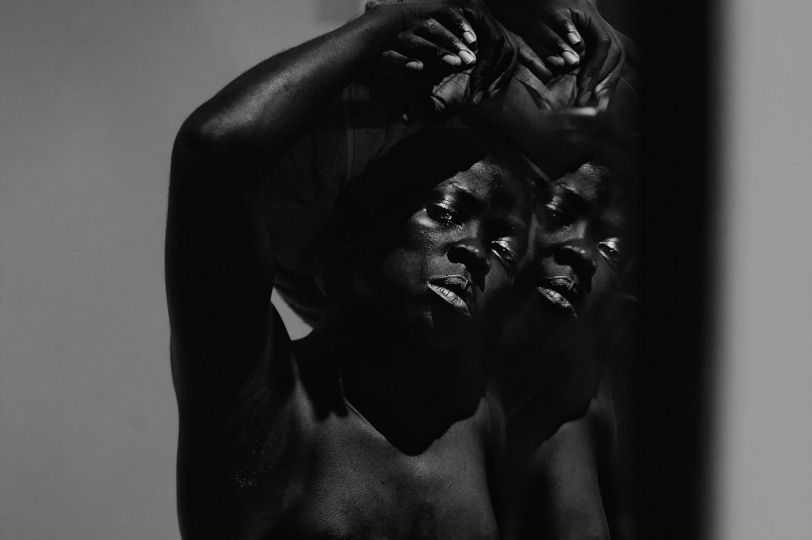This monograph offers to discover Valérie Belin’s body of work, through over thirty series, from the 1970s to the present day, and to examine how her different series respond to each other, evolve and question our relationship to beauty, artifice and the impermanence of things. From the shooting to the retouching work, the photographer creates by successive touches and layers, like a painter playing on the ambivalence between the living and the artificial. Mixing color and B&W, her work invokes many references to the history of art. The book accompanies the retrospective of the artist presented at the Museum of Fine Arts in Tourcoing, the MUba Eugene Leroy, from March 17, 2023.
The Uncertain Beauty of the World
Valérie Belin’s work is crossed by recurring questions, revealed in this book by putting her series in perspective. Exploding the chronological order, a game of correspondences takes place between the color and B&W images and the different series of the artist. The subjects she chooses are characterized by their plastic beauty or conversely by their trivial character. The people represented, whether they are models, transsexuals, clown figures or Michael Jackson look-alikes, are, for the most part, in a transitional state towards «the desire to transform themselves into images», says Valérie Belin, while her objects, such as vintage cars or others that have been involved in accidents, her engines or vintage dresses, seem to be animated, sublimated by the lens. Through an important work at the time of the shooting until the phase of retouching, of superimposing the layers, like a «digital palimpsest», Valérie Belin underlines all these ambivalences in the heart of the image. The latter one then takes its autonomy and de-realizes itself from its subject. The resulting images have a strong aesthetic and evocative power that embody both «the drama and beauty of the world,» as Sebastien Gokalp points out in his text.
Interview with Valérie Belin
The MUba, in Tourcoing, is devoting a major retrospective to your work, starting at the end of March. Have you ever exhibited in a fine arts museum and what does this imply for the choice of works you present?
Indeed, it is the first time for an exhibition of this scale. It is not so much the history of the place nor its age (the Tourcoing museum was built in 1860) as the space itself that guided me in my choices. I was very generously given the large nave and its German-style glass roof, an extension of the museum dating from the 1930s. I quickly realized that a very classical, single-line display of photographs was not going to suit this space. I preferred to opt for a very dense display, on two levels, a bit like in the 19th century. This also allowed me to play with the series, by creating grids of four images. This allows for an effect of abundance. I have not adopted a chronological hanging either, even if the coherence of the periods of my work is respected.
What is your relationship to painting, in a general way?
It is very close and very strong. It appears in my work as a detachment from the subject. We often appreciate a photograph through the subject that is represented and this determines its quality. In my work, this is not the case at all. What is decisive is how I photograph rather than what I photograph. And this is even more true today, when my subjects are relatively anonymous. On the other hand, from these women or these men, I shape or make imaginary characters. It is as if, in the end, I use these anonymous people as blank canvases. This is true of the Painted Ladies, the All Stars, or my latest series Heroes.
How does this sentence from the painter Eugene Leroy, after whom the MUba is named, following a donation in 2009, inspire you: «You have to be a painter to make images, and it is the images that make the painting happen, but it is a secret.»?
This could also be said of my work. Images exist somewhere, whether they are in a magazine or in a film, since we are surrounded and shaped by images. All my subjects, from the beginning, and all human representations have to do with stereotypes. All these people, who are living beings, the bodybuilders, the transsexuals, for example, have the desire to transform themselves into images. There is a kind of paradox in my images, always, between the effect of distancing and coldness conveyed by the pose and its neutrality, and the perception of a tormented or «disordered» interiority.
Eugene Leroy was an artist known for giving thickness to color. How do you give life to the texture, to the surface, in photography?
It is often said that photography defines itself, in comparison to painting, as a «poor» medium, but this is also one of its qualities. What interests me in photography is precisely this little thickness and these phenomena of apparitions, like ghosts, which can be compared to optical phenomena. My work is neither a narrative, nor a literary, nor a referential art. It is an art of immediacy, where there is an effect of presence. It is made by successive layers, especially since I work digitally, so, yes, from a manufacturing point of view, this superposition is quite close to a painting process on canvas.
How did you work on both the space in the exhibition and the spacing of the images in the catalog?
I wanted this exhibition to be an open book. The series are not separated, they are shown as in the catalog, in blocks. But with games of confrontation, continuity or, on the contrary, colored counterpoints. There is a real rhythm in the book that can also be found in the exhibition, namely face-to-face between B&W and color photos, connections between subjects. I wanted to avoid at all costs having one photo per page always in the same format, series by series. And to put in correspondence, in a rather free way, series between them. The catalog is really the reflection of what I wanted to do in the exhibition.
The book concludes with a double series of images showing a wrecked car and a classic car, the Bugatti Royale, a symbol of luxury and mechanical beauty. Was it the idea of a disappearing world that made you want to end the book this way?
There is, indeed, an elegiac side in these last photos, but as in all my images that have this somewhat nostalgic aspect. In any case, out of time. For me, beauty means something that is out of time.
Valérie Belin is a visual photographer who studied at the École nationale supérieure des Beaux- Arts de Paris and philosophy at the Sorbonne. She exhibited her first photographic research in the early 1990s: a work on memory and trace in images with a minimalist aesthetic. Since then, she has pursued a body of work that blurs the boundaries of gender, identity, and the ambiguity between the status of the real and the virtual.
Her photographs have been exhibited in prestigious contemporary art venues, including the Maison Européenne de la Photographie, the Centre Georges Pompidou in Paris, the Huis Marseille in Amsterdam, and the Musée Photo Elysée in Lausanne. She has published numerous books, including Painted Ladies, at Atelier EXB, which accompanied her exhibition at the Rencontres d’Arles in 2019.
Livre
Valérie Belin. L’incertaine beauté du monde.
Atelier EXB
Texts
Sébastien Gokalp, Director of the Musée national de l’immigration, Paris
Mélanie Lerat, Director of the MUba Eugène Leroy, Tourcoing
Hardcover, 21 x 28 cm
192 pages
106 color and B&W photographs
ISBN: 978-2-36511-358-8
Price: 39 €
Atelier EXB – www.exb.fr
Exhibition
Valérie Belin. L’incertaine beauté du monde.
From March 17 to August 27, 2023
MUba Eugène Leroy
2 Rue Paul Doumer
59200 Tourcoing, France
http://www.muba-tourcoing.fr/
















